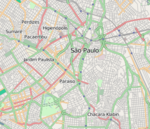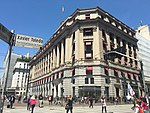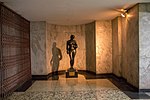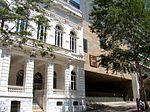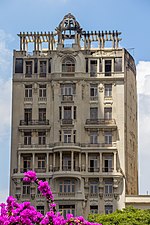Ramos de Azevedo Square
1928 establishments in BrazilBuildings and structures in São PauloSquares in BrazilSquares in São PauloTourist attractions in São Paulo

The Ramos de Azevedo Square (Portuguese: Praça Ramos de Azevedo) is located in the República district, in the center of the Brazilian city of São Paulo, and is famous for being home to the Municipal Theater. It was created in 1911, after the theater's inauguration, under the name Esplanada do Theatro. It was renamed in 1928, after the death of the architect Ramos de Azevedo.The square, located in the space between Conselheiro Crispiniano Street and Formosa Street, under the Viaduto do Chá and next to the Alexandre Mackenzie Building, forms a well-known postcard of the city.
Excerpt from the Wikipedia article Ramos de Azevedo Square (License: CC BY-SA 3.0, Authors, Images).Ramos de Azevedo Square
Rua Formosa, São Paulo República (República)
Geographical coordinates (GPS) Address Nearby Places Show on map
Geographical coordinates (GPS)
| Latitude | Longitude |
|---|---|
| N -23.545833333333 ° | E -46.637777777778 ° |
Address
CBI Esplanada
Rua Formosa 367
01049-000 São Paulo, República (República)
São Paulo, Brazil
Open on Google Maps



